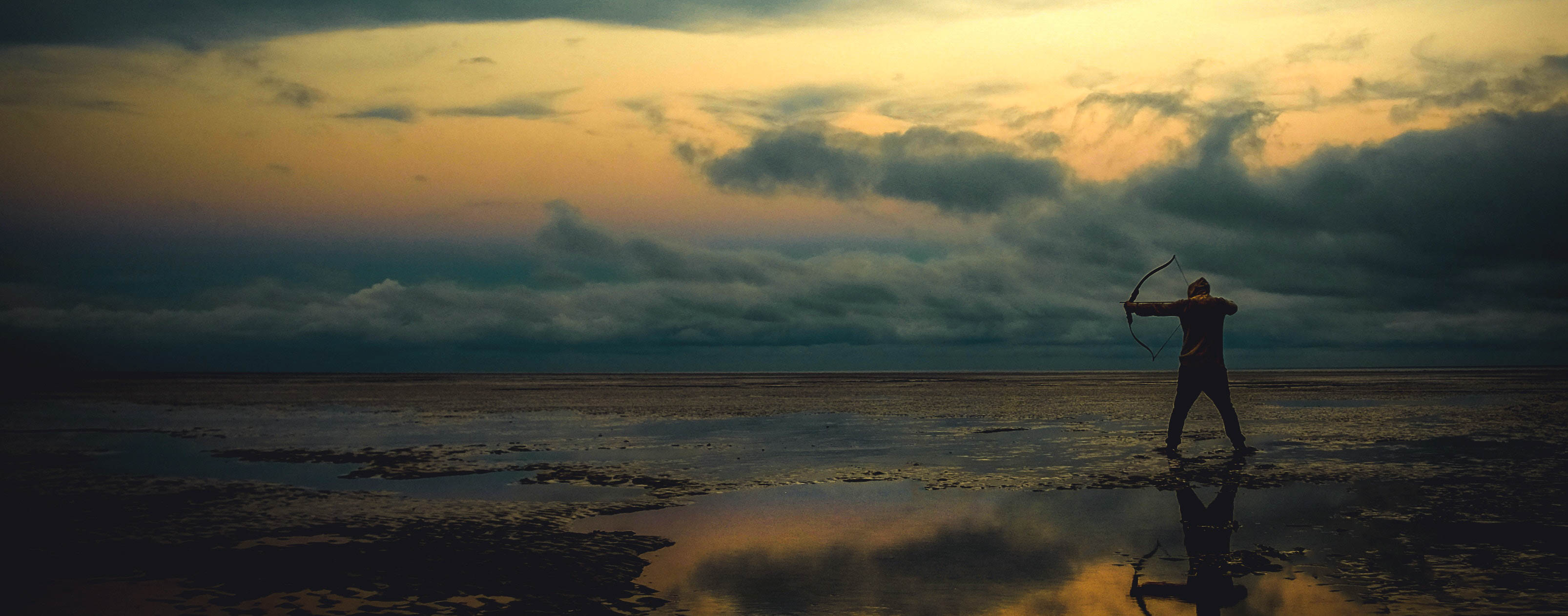Archery Hunting: Selecting A Bow
I’m often asked by friends who want to get into archery hunting, what kind of bow they should buy.
My response is always the same, “I don’t know. Are you a Ford, Chevy or Dodge person?” Just as you’d select a vehicle to match your wants or needs, the same can be said for selecting a bow. Each has its own unique characteristics, appeal and feel, and there are far too many variables for a simple answer.
But one quick caveat before we get into the nitty-gritty. Being that compound bows are the only weapon that I have hunted with for the last eighteen years, they are my focus. I have ZERO experience with recurve or longbows as, for some reason, they have never been of much interest to me.
I’m also going to avoid talking about brands (Mathews, Hoyt, Bowtech, etc.) here, as all of the name brand bows are very good and will serve you well for many years. It just comes down to personal preference and what feels the best in your hands.
Finding your draw length
Before anything else, you’ll want to determine your draw length. The best option here is to have your local archery shop properly measure you, but if you don’t have a local shop there is a DIY method you can use to get you relatively close.
First, measure your wingspan. Stand up straight with both arms and hands extended to your sides, forming a “T.” Have a friend measure from the tip of one middle finger to the tip of the other middle finger in a straight line. Divide that number by 2.5 to estimate your draw length. An archery shop will need to measure you again for accuracy and precision. You don’t want to buy a bow with a draw length that’s too short or too long.

Axle-to-axle length
Axle-to-Axle length, or the distance between the centers of the upper and lower cams, is an important measurement to select a bow that suits your hunting needs. For example, if I was doing a lot of hunting out of a small ground blind or a single person tree stand, I may opt for a bow that has a shorter axle to axle measurement, as it would be smaller, thus giving me more ability to maneuver in tight quarters. Whereas if I was doing a lot of hunting in open terrain, I may select a bow with a longer axle to axle measurement. Outside of the obvious physical size difference between the two, a longer axle-to-axle measurement will be more forgiving when taking longer shots.
Draw weight
Selecting the proper draw weight when starting out is super important. I can’t possibly tell you what weight you need, as everyone is different in the strength department. I will, however, recommend that you start with something on the lighter side.
The muscles used to draw a bow are muscles that most people typically don’t train, making them easily injureable. Even after shooting a bow for almost two decades, I will ramp up to hunting season by shooting only a few arrows a session, building up from there as the season approaches. Additionally, with modern day bow technology, you don’t need a massive draw weight to achieve a complete pass through at common shot distance.
Now that you have selected your new bow, it’s time to add the things needed to make it complete (rest, sight, release, arrows), all of which are equally important in making your new bow perform to its maximum potential.
Rest
You essentially have two options when it comes to selecting your rest. A drop away-style rest or a full capture rest such as a Whisker Biscuit. The debate between these two is just as heated as which brand of bow is better. What I will say is that both have their advantages and I have run both for a number of years.
A Whisker Biscuit style rest does hold the arrow more securely for spot and stock-type hunts and there is no chance of mechanical failure because there are no moving parts. The downside is that there is a potential for loss of speed due to the drag of the veins through the hairs.
A drop away rest can be more problematic with spot and stock since the arrow has a tendency to bounce or move around when bumped. There are things you can do to alleviate that though (pointer finger over the arrow). Additionally, there are moving parts, which could fail.
When it comes to selecting your rest, try both a drop away and a full capture and see which one feels the best to you. Once you have selected your rest, you will want to have an archery shop set it up for you. They will properly align it for you and paper tune the bow.
Sights
Knowing what kind of hunting you plan on doing is very important when selecting your sight. There are a ton of options (1-, 3-, 5- and 7-pin, sliders, fixed etc.) all of them have their place and it comes down to proper application and personal preference. I shoot a 5-pin with a slider because I hunt both heavily wooded and open terrain. So I like having the option of having a 20-, 30-, 40-, 50- and 60-pin without having to adjust anything. and for open terrain, I can roll my dial out to 100 if needed. The other side of the coin is my best friend and hunting partner, who shoots a single pin slider. For him having 3-,5- or 7-pins glowing in his sight picture is distracting. So again, try some different sights out and see what is comfortable for you.

Releases
There are three main kinds of releases for hunting, Handheld/T-Handle, Dual Jaw wrist or Single Jaw/Bar wrist (and some people hunt with back-tension releases, but that is an advanced skill set which is outside the scope of this article).
Before you decide on one release over another, I would suggest taking the time to shoot each of them and see what feels the best for you. Not all caliper-style releases are the same and it often comes down to personal preference. In the end, buy the best release you can afford, because, after all, it is the last contact between shooter and bowstring, and ultimately what bow hunting success hinges on.
Arrows
Just as with everything else with archery, there are a ton of choices when it comes to selecting arrows. When selecting an arrow, it comes down to draw length, arrow length, arrow weight, spine, and what you intend on using your bow for (hunting versus target shooting). I would highly recommend you take your new bow to an archery shop and have them help you select the proper arrow.
Archery hunting is one of the most rewarding, challenging, exciting and most of all frustrating forms of hunting out there. It’s a balance of skill, luck and opportunity, but when the stars align, it feels like you have won the lottery when you are able to harvest an animal. Even if you harvest anything, a bad day of hunting is still better than the best day at work and is a great way to relieve stress and reconnect with nature.





